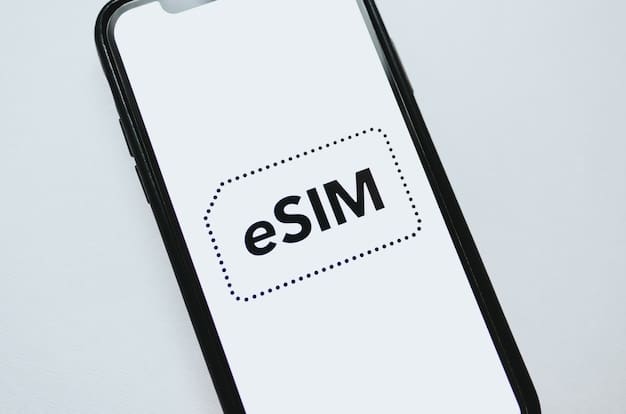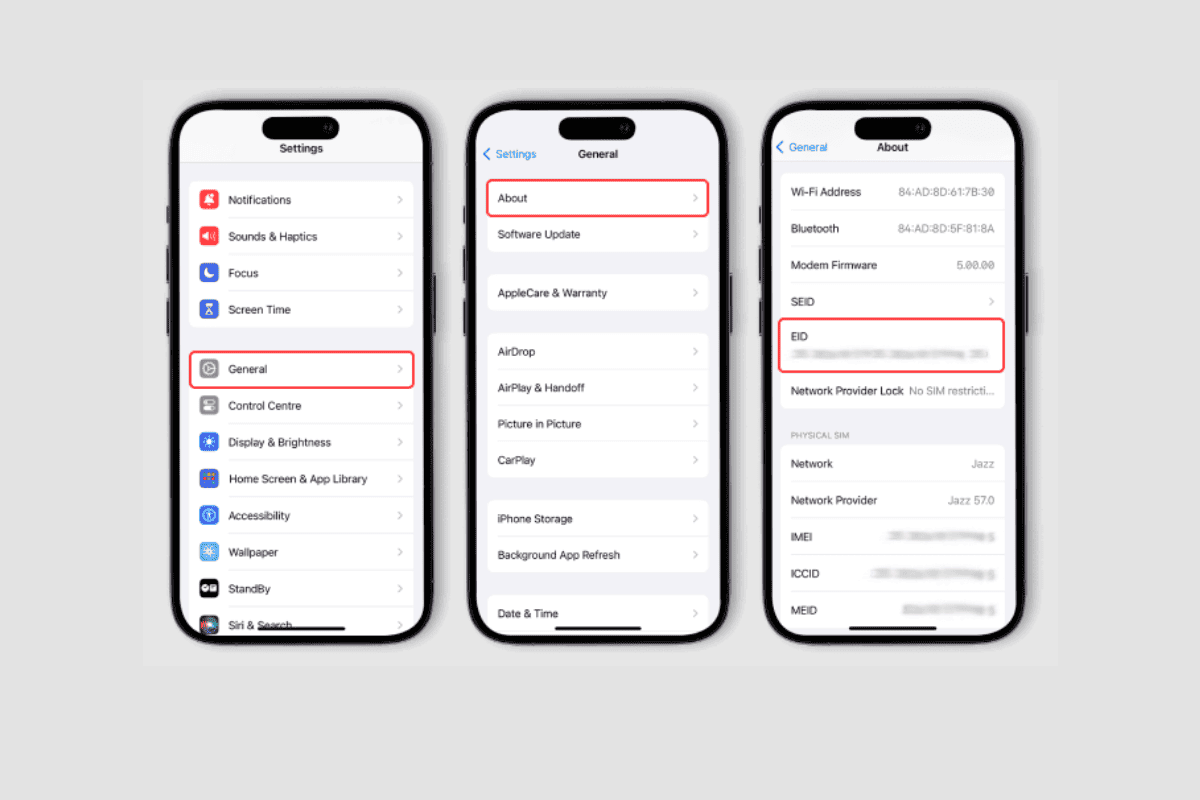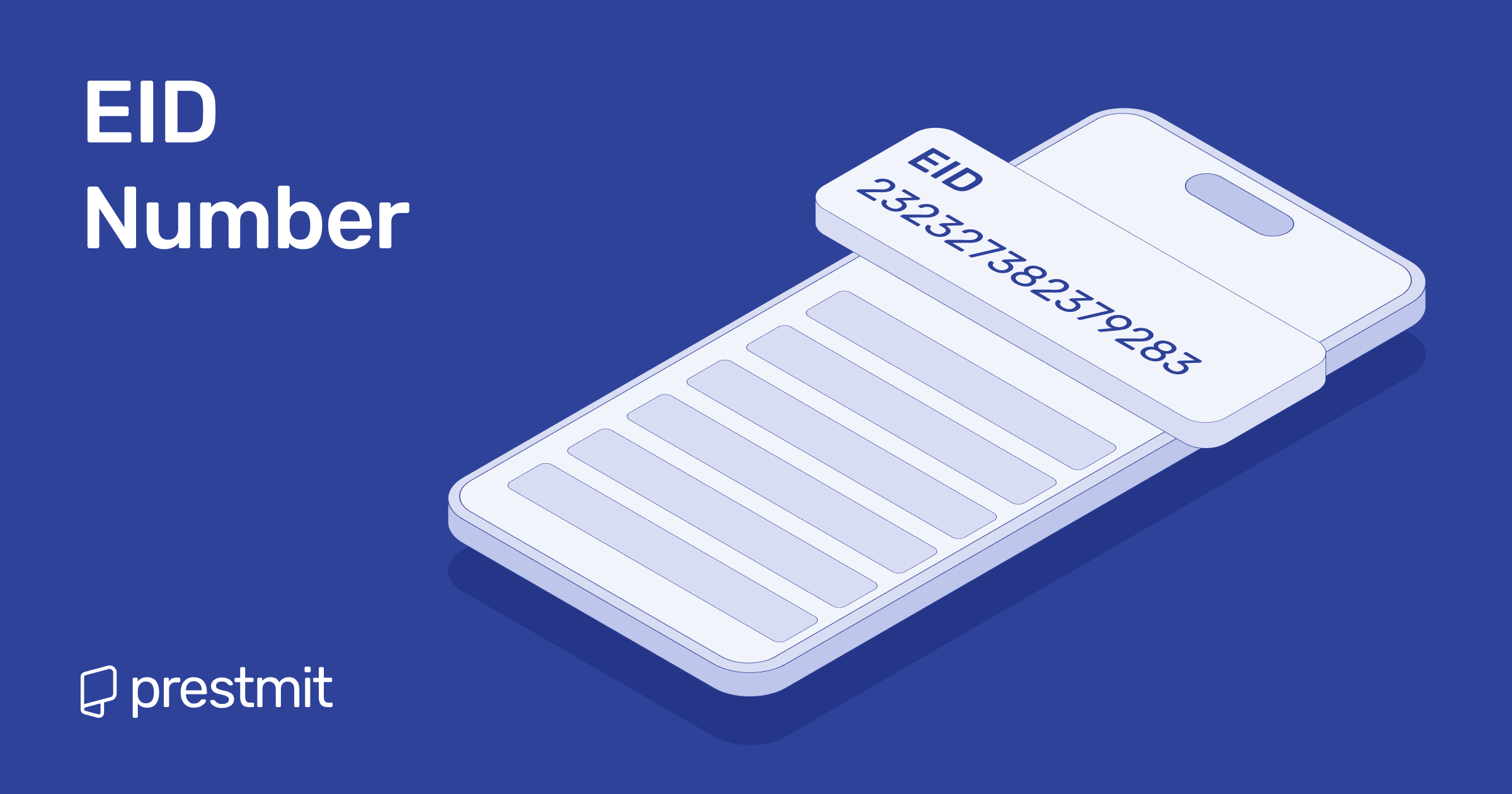Table of Contents
Do you know your smartphone has a unique digital ID that powers eSIM technology? This digital ID is the EID number used to activate and manage eSIM. Today, the world is transcending toward eSIM technology, and by 2030, over 70% of all cellular devices distributed across the world will be eSIM-capable.
EID number technology is now becoming a daily necessity. This article reveals everything about EID, including where to find an EID number on different devices, why it matters for your mobile security, and how to troubleshoot common EID issues so you stay connected anytime, anywhere.
What is an EID Number?

EID is an acronym for Embedded Identity Document, usually a 32-digit special identifier allocated to your device’s eSIM chip. Unlike a SIM card number (ICCID) linked to a removable card, the EID is built into your device and cannot be changed.
Mobile carriers use it to activate, manage, or transfer your eSIM profile. It’s essentially the digital fingerprint of your eSIM module, ensuring your device is recognized across global networks. Because it’s permanently embedded, the EID provides stability, security, and easy portability when switching between carriers.
How Can I Find My EID Number?
Finding your EID number is easy. The process of finding an EID varies depending on the device you are using. You’ll need to go to your phone’s settings to simplify the process. On both iOS and Android, the EID is stored in the device’s system information.
Some devices print it on the box or include it in the original purchase documentation. People who have activated their eSIM before should have a record of their EID, which is usually stored by their mobile carrier. Always check the number carefully before sharing it, since it is a sensitive identifier synced to your device.
On iPhone
To locate your EID number on an iPhone, follow these steps:

- Open Settings.
- Tap General.
- Select About.
- Scroll down until you see EID listed among device details.
Apple displays the full 32-digit EID clearly in the About section. You can copy it directly for carrier requests or eSIM activation. If your iPhone box is available, the EID is printed on the original label alongside the IMEI and serial number for quick reference.
On Android
To find your EID number on Android:
- Open Settings.
- Tap About Phone or About Device.
- Select Status or SIM Status.
- Look for EID in the list.
The exact menu name may vary slightly depending on your Android brand, but most manufacturers, such as Samsung, Google, and OnePlus, follow this structure. Some devices also allow you to search “EID” directly in the settings search bar to locate it instantly.
Why Does Your EID Number Matters?
EID numbers are particularly vital because they can unlock the flexibility of eSIM technology. If you need this number, it would be impossible for the carrier to link a new eSIM profile to your phone.
This technology helps you facilitate things like activating new plans, switching carriers, or restoring service for a reset device. The EID availability in a device proves that the device supports eSIM, saving you from the stress of figuring out if your device is compatible with eSIM. EID comes unique, and no two devices have the same EID; that way, there is no fraud, and it also ensures secure eSIM provisioning.
What Are the Security Features of EID Number?
An EID number usually has built-in encryption and verification layers. These security layers protect your device against unwanted access and cloning. Only the real owner or authorized carrier can activate or modify eSIM profiles, which also serves as an extra layer of security for mobile identity and digital data.
The EID number enhances mobile security in several ways:
| Security Feature | Benefit |
| Unique Identifier | Prevents duplication of eSIM profiles across devices. |
| Embedded in Hardware | Makes it difficult for attackers to alter or clone. |
| Carrier Verification | Ensures only authorized profiles are linked to your device. |
| Global Recognition | Works across different countries and network providers. |
By combining hardware-level embedding with carrier authentication, the EID minimizes risks like SIM swapping or unauthorized number transfers.
How to Resolve Common EID-Related Issues
If your EID isn’t showing or is rejected by your carrier after buying an eIM plan, these are some ways to resolve the issues:
1. EID Not Showing on Your Device
If your EID number isn’t visible, it could be due to outdated software or a device that doesn’t support eSIM. Update your operating system to the latest version, restart your device, and check under your phone’s SIM settings again. If the problem continues, then contact your manufacturer.
2. Wrong EID Number During Activation
When you enter the wrong EID number, it can hinder eSIM activation. When activating your eSIM, check the number properly in the device’s settings before sharing it with your carrier.
Entering incorrect numbers is a common human mistake; instead of typing in the numbers manually, using the copy-and-paste method is the safest option. If the wrong EID was submitted, immediately send a reset request to your carrier to rectify it.
3. eSIM Profile Failing to Download
You might come across scenarios where your eSIM profile is encountering download issues. In such a scenario, quickly confirm your connection to be sure you have a working network.
Also, check your storage capacity to see if you have enough space for what you are downloading. Then, restart your phone and try to download the app again via the link provided by your carrier. If it doesn’t work, know that your EID may need to be re-verified before the download proceeds.
Frequently Asked Questions (FAQs) About EID Number
Is EID a SIM card number?
No, the EID isn’t the SIM card number. It’s a special digital identifier for your device’s eSIM chip, while a SIM card number (ICCID) relates to your network profile. The EID allows secure remote provisioning that works without a physical SIM card.
Do all phones have an EID number?
An EID number is not designed for every phone. It is only compatible with devices with eSIM capability, which are the ones that come with an EID number. Contemporary gadgets like iPhones, premium Android models, and some smartwatches are EID compatible. However, regular phones and old devices do not have or support EID and are not to feature an EID.
How can I find my EID number on my Android?
Go to your phone’s Settings, click the “About phone,” and search for “SIM Status” or “IMEI and EID.” Certain Android models put it under “Connections” > “SIM Manager.” You can also scan the QR code provided in your eSIM setup menu to retrieve it.
How can I retrieve my EID number when I have lost it?
If you misplace or lose your EID number, check your original device box, as many manufacturers print it on the label. You can also contact your carrier, who may be able to recover it using your account details and device information.
Conclusion
Your EID number is not just a string of digits—it’s the backbone of your eSIM connectivity. With the number, the carriers can securely activate and manage your mobile service without needing the physical SIM cards.
Understanding how to find and protect your EID helps you stay in control of your mobile experience. As eSIM adoption accelerates worldwide, learning to apply your EID isn’t just useful—it’s equally a big plus to anyone who appreciates flexible, seamless, and secure connectivity.

